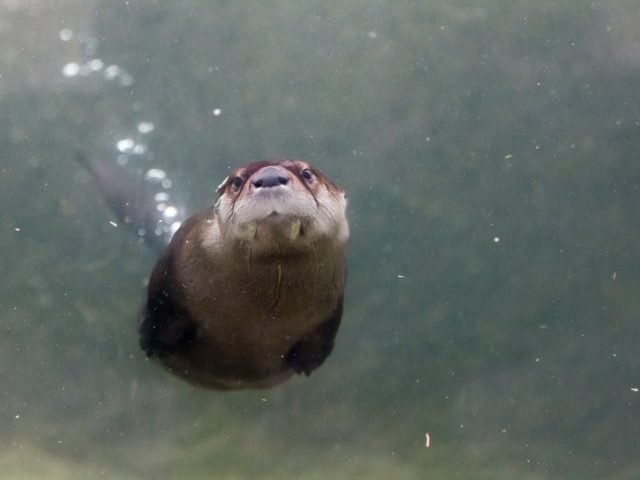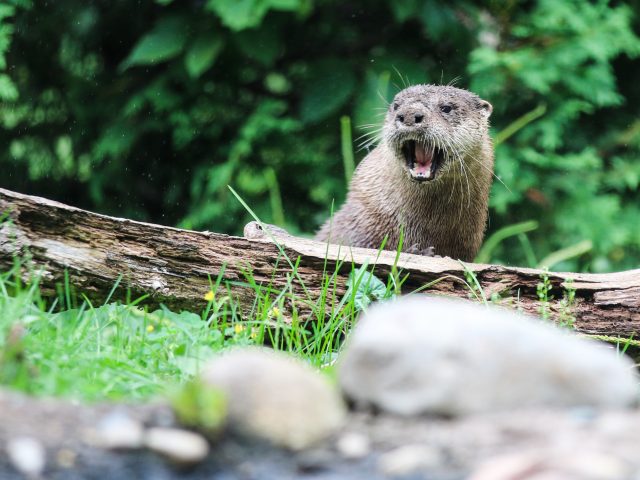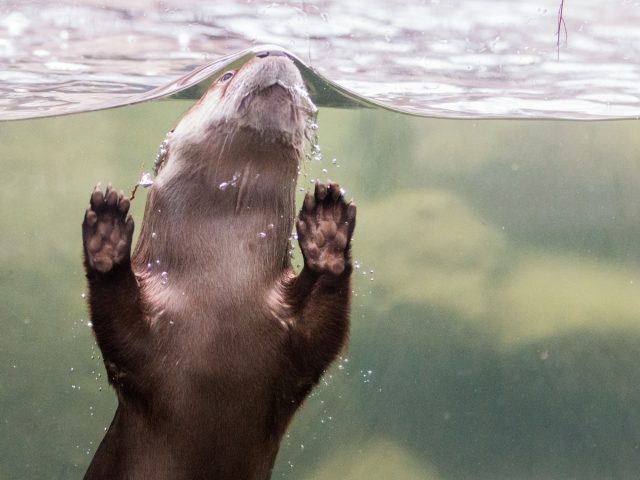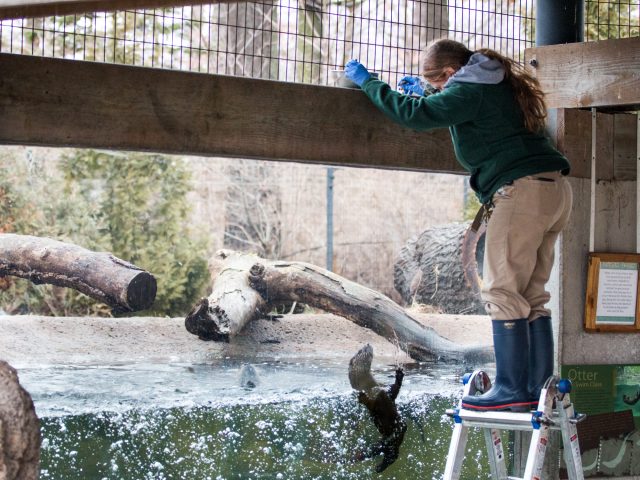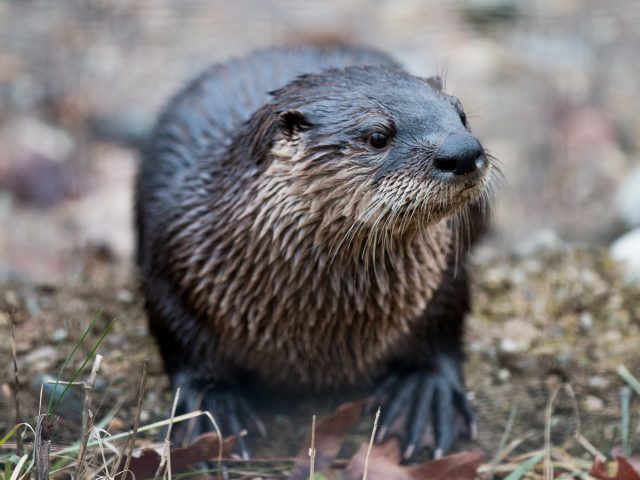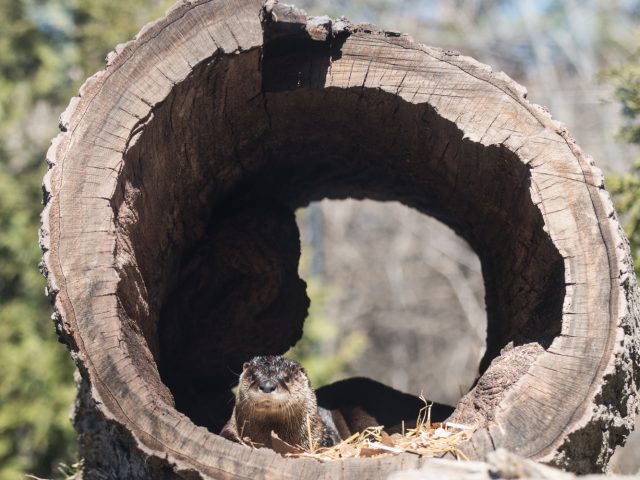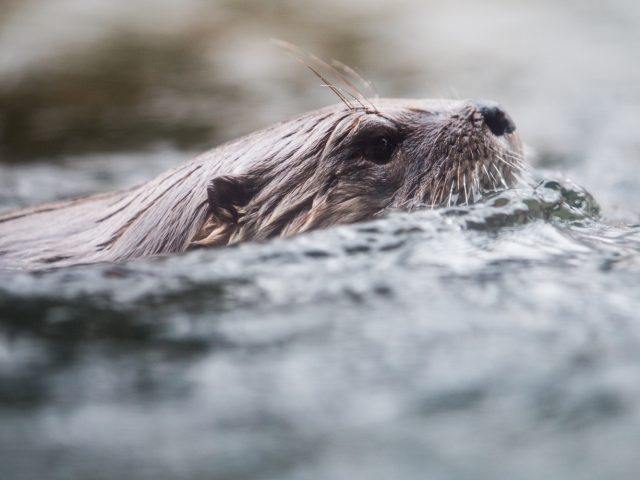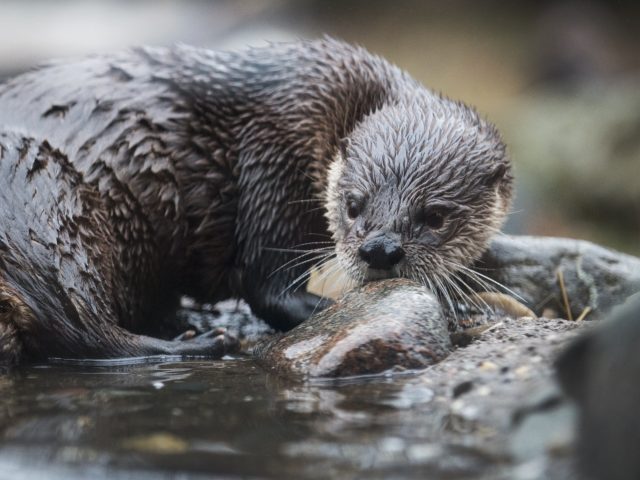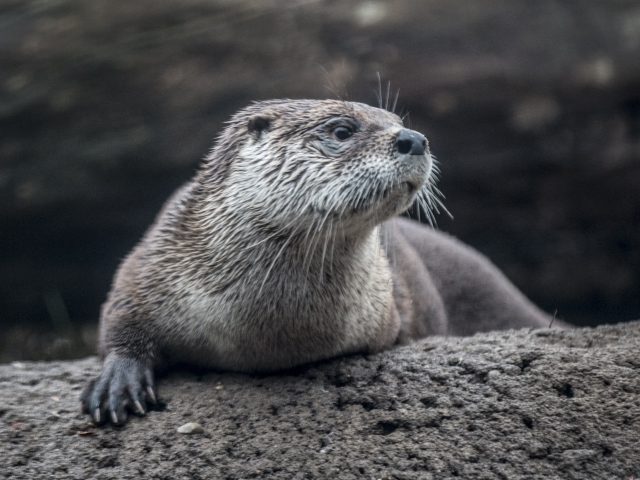Characteristics
Like other members of the weasel family (Mustelidae), river otters have long, streamlined bodies with short legs. They have very dense, usually brown fur, with a long tail and webbed feet for swimming. In the wild, these otters are solitary, except during mating season or when females are raising young.
Behavior
Otters spend up to 60% of their time hunting and foraging. Other normal otter activities include playing, sliding, grooming, swimming, and digging. Otters usually hunt at night, especially during the summer. Like all their relatives, otters have scent glands located near the base of their tails. They use these glands to mark their territory and communicate with other otters. They also use vocalizations to communicate.
Conservation
By the turn of the 20th century, the river otter had been wiped out from large parts of its range as a result of habitat loss, pollution, and unregulated trapping for its fur. Fortunately, the otter population has undergone a significant recovery due to reintroduction efforts and improvements in trapping management and water quality.
What YOU can do to help: Do your part to improve water quality. Try creating a rain garden to improve water quality in your back yard.
Did you know?
- Otters can see well under the water, but out of the water they are nearsighted.
- Because of their high metabolic rate, otters can consume 20% of their body weight per day.
- Otters use their long whiskers (called vibrissae) to hunt in dark or murky water.
Our Animals
There are four river otters at Potter Park Zoo. Miles, a male, was born at Potter Park Zoo in 2013 (Potter Park Zoo’s first otter birth)! Nkeke, a female, came to the zoo in 2017 from the Roger Williams Zoo in Rhode Island. Two of their pups born in 2024 are also here: males Copper and Petoskey (“Pete”), who were named after counties here in Michigan! Miles can be identified by his stubby tail and missing right limbs.
